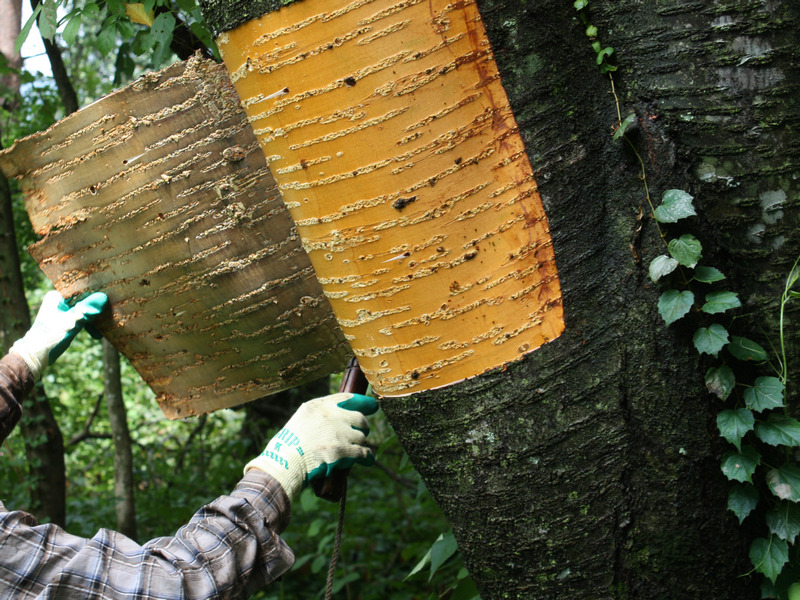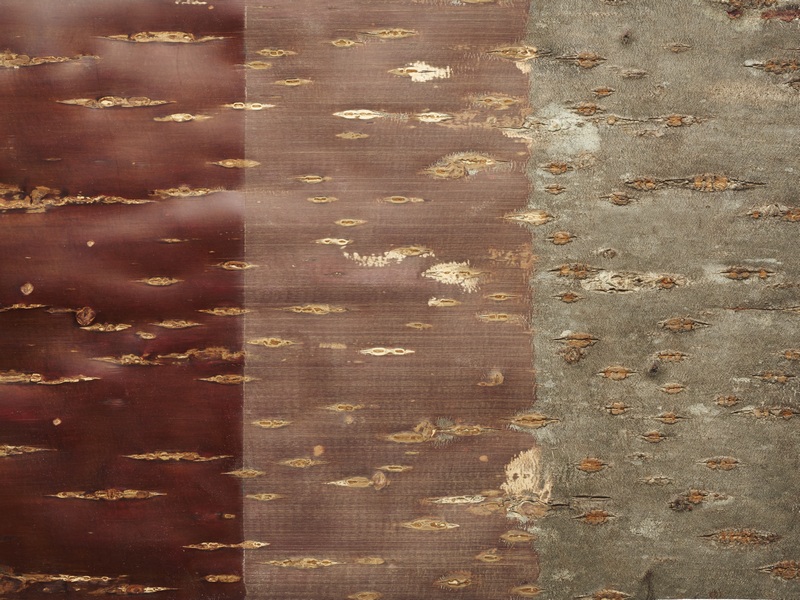Cherry bark Cherry bark is an eco-friendly material as it will regrow after being harvested. Cherry bark ware mainly have two different kinds of finishes: the one is Marble, that retains the appearance of the raw bark ; the other is Natural, whose surface is thinly scraped to a polish. The surfaces of tea caddies will grow more lustrous the more you handle them.   Harvest Cherry bark is harvested between August and September in the mountains of northern Japan, because during this period the trees contain a large amount of water and craftsmen can peel the bark cleanly from the trunk. Then it is dried naturally for about two years. Even after cherry bark has been harvested from a tree, if the total amount of harvest is less than a third of the surface area of the tree trunk, the bark regenerates, and this part can be harvested a second time to give bark of greater value. Finish The raw bark of wild cherry has a gray-brown color and its pattern is called Marbled. It can be used as is to appreciate the natural appearance of the bark, but bark with a beautiful marbled pattern is rare, and therefore valuable. Raw bark becomes reddish-brown when it is sanded, and then as it is further polished it becomes shiny and red, called Natural. To transform wild cherry bark into "Marble" and "Natural" craft material, the craftsman cuts and polishes each sheet of bark by hand. The "Katamono", "Kijimono" and "Tatamimono" techniques are used to produce articles made of cherry bark. Katamono This technique is used to make cylinders for tea boxes. The craftsman glues together layers of cherry bark and wood. He then wraps them around a cylindrical wooden mold and heats them with a highly heated trowel to attach them together. As all parts of a tea box are made from a cylinder, the boxes have a high airtightness and protect the tea leaves from moisture. Kijimono This is the technique used to make boxes or rectangular shaped items like trays and tea chests. It is performed by using a highly heated trowel to press the layers of cherry bark and wood onto a wooden base. Tatamimono This technique is used to carve preassembled layers of polished cherry bark into all sorts of shapes. Each shape is carved so as to highlight all of the beautiful layers. It is then polished to an extremely high degree, which showcases the original luster of the cherry bark. Pieces created in this way are used as the inner lid handles of high quality tea caddies, or in jewelry. |




